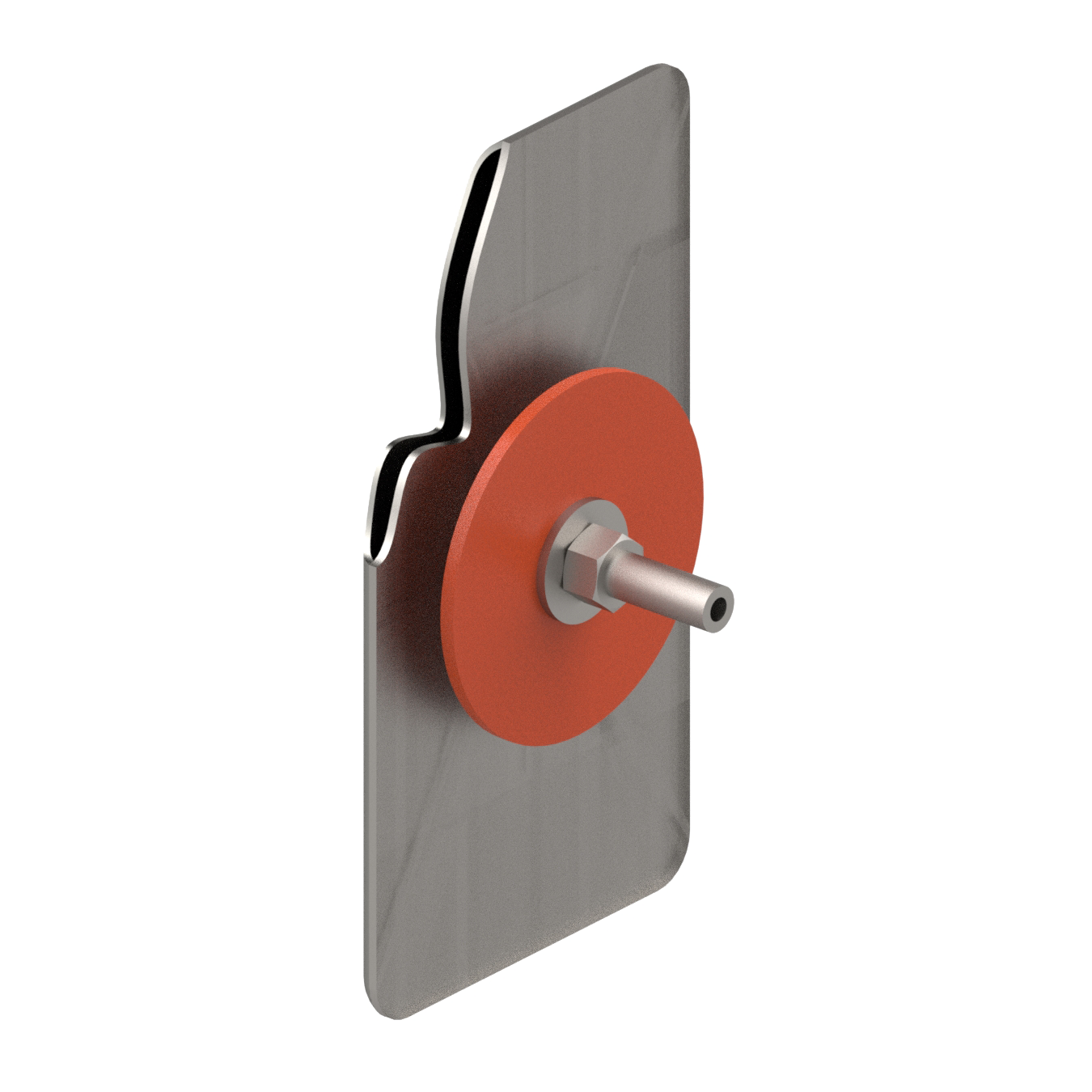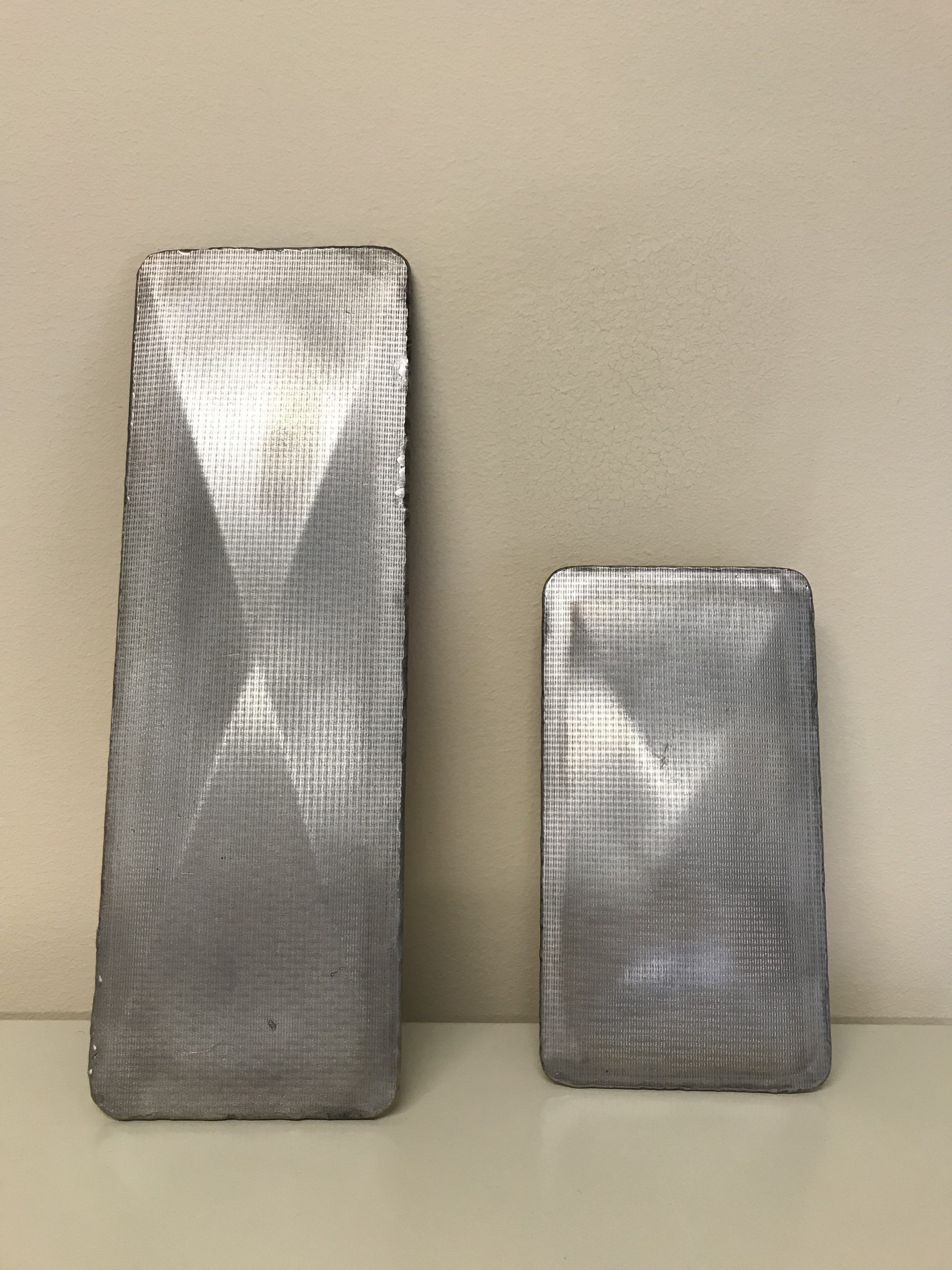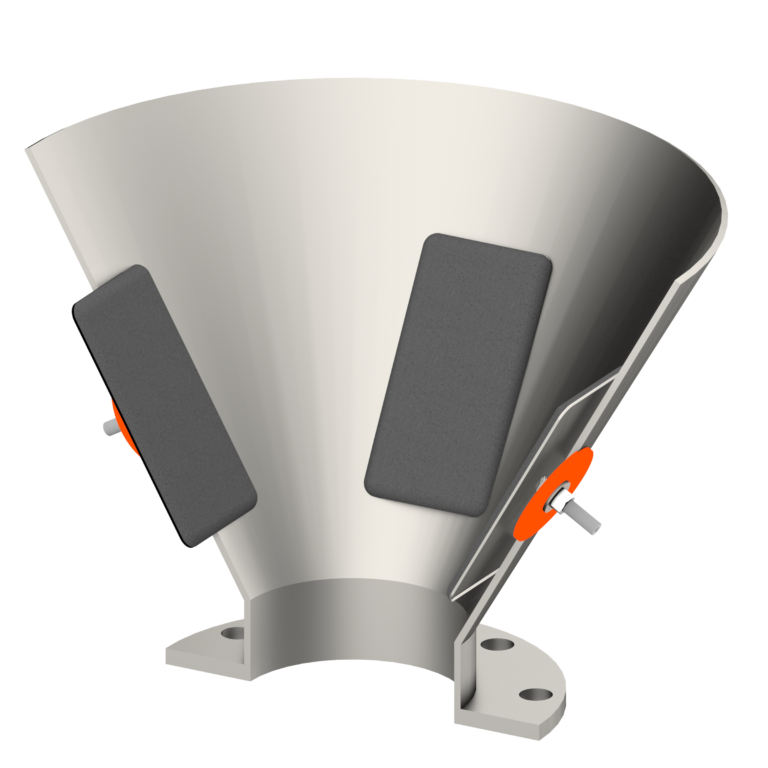Specifications
TransFlow® Aeration Pads are used to fluidize fine powdered bulk materials to start and maintain flow out of hoppers, bins and silos. These pads distribute air or gas uniformly causing positive flow of the stored material. Materials that have sluggish flow characteristics like lime, flour, soda ash, bran, clay, carbon black, sawdust, detergents and resins can be successfully handled by Transflow® Aeration Pads.
Depending on the characteristics of the material that is being handled and the slope of the discharge hopper, two or more pads are needed to fluidize the stored material. If two pads are used they should be mounted across from each other. If four pads are required they should be equally spaced and in either case located near the edge of the discharge opening. Additional pads are spaced in a straight row above the first row of pads.
For handling most powders, pads should be spaced no closer than 12” on center. For applications involving a difficult handling material or less sloped hopper, the pads will need to be located closer to each other.
TransFlow® aeration pads are simple to install. Drill a 7/16″ hole in the selected location. Insert the pad from inside the bin with the long axis of the pad in the vertical position. From the outside, place the rubber washer and flat washer on the threaded pipe and secure with the hex nut. Attach the compressed air components and piping.
Each pad requires 5 to 10 SCFM of compressed air or gas. Pressure of 3 to 15 PSIG is recommended and used on most applications. The maximum pressure recommended is 50 psig. The final operating pressure and consumption will be a result of the characteristics of the bulk materials. The air can be shut off when fluidization is not required. We recommend that the fluidization be started a short time before the start of the material discharge.
TransFlow® can be cleaned by ordinary water and detergent; high pressure steam or chemically cleaned using standard methods. The pad material is non-migrating. No danger of lint contamination caused by fiber abrasion. Quick drying-does not retain moisture.
The air pad is constructed with The Young Industries, Inc. TransFlow® aeration media. This media is constructed of multilayer wire mesh with finished contact surface that produces a smooth evenly distributed airflow. This finished layer also produces a layer of air that separates the bulk material from the media making it easy for the material to slide.
The TransFlow® Pad is more efficient because of its internal baffles and all welded design. The fluidizing media is welded to the back plate. This provides 15% more surface area compared to crimped pad designs. TransFlow® pads are long lasting. In fact, they are almost indestructible.
Unlike other aeration devices that use cotton or fiberglass diffuser material, TransFlow® Aeration Pads can be cleaned chemically or with steam. And they dry quickly. Unlike aeration devices that use plastic or rubber boots and covers, TransFlow® Aeration pads do not flake, chip or degrade. TransFlow® Aeration Pads are abrasion and corrosion resistant.
General Specifications
-
Material: AISI type 316 stainless steel fluidizing media with AISI type 304 stainless steel back and plated steel threaded pipe.
- Operating temperature: Up to 1000 degrees F.
- Corrosion and oxidation resistance: Excellent
- Strength: Up to ten times stronger than other fluidizing media. Resistant to abrasion and puncture. Substantially better than cotton and fiberglass fiber composites or powder metal or plastic covered products
- SIZES: Two sizes available to handle most application requirements
3.75” wide x 7” long x .31” high with 1/8” NPS Pipe connection
4” wide x 12” long x .35” high with 1/8” NPS pipe connection
- TransFlow® pads are normally in stock for immediate shipment
- Air or gas piping system with controls
- Compressor or PD Blower units
- Pneumatic or mechanical conveying system or components
- Custom designs



